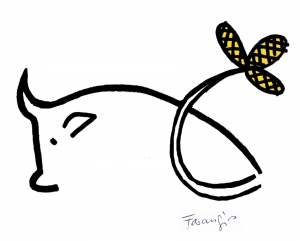Fruit without Seeds!
Manuchehr Jamali, translation G.Yegane Arani-May
Man knows that truth is a fruit without seeds,
Truth, he knows, must pacify and satisfy your palate,
Hadn’t it been paradises fruit that he’d eaten,
And of which he’d spat out its seeds in disgust,
And said why God would have to place in fruit with sweetness,
teeth breaking rocks,
The devil though knew, that ripe fruit would bear heavy stones.
And seeds of “visionary fruits” would break the “questions” of the teeth!
The devil planted the seeds, that man spat with anger,
And over time grew another plant, and he’d create another paradise.
One that would produce fruit without seeds, and sights without questions!
And man, thrown out of paradise for eating God’s fruit,
Was so put back into God’s paradise,
And went with Satan’s paradisical insights,
Offering taste and comfort,
And the fruit, within him, would contain no seeds of questions.
Tired from painfully planting the seeds and cultivation,
And from the burden of growing and work,
The task became a bane.
Since then the devil would be in heaven,
That “knowledge without doubts” was achieved,
And a truth of “fruit without seeds” known,
And the truth without question be swallowed.
And man did not know that truth is the Creator,
Whose seeds become questions,
And that the knowledge that these questions developed, he would not find,
and thus not have the truth.
So he named the devil’s paradise, God’s paradise,
And God’s paradise would be named: a lie that’s past!
